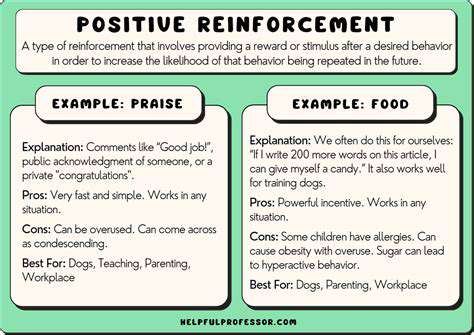Bringing Home a Pet with Kids
Before bringing a new furry, feathered, or scaled friend into your home, it's crucial to thoroughly assess your living space to ensure a safe and comfortable environment for your new pet. This involves a careful examination of potential hazards and areas that might need modification to accommodate their needs. Identifying potential dangers, such as poisonous plants, is paramount for your pet's well-being. A thorough home inspection will help prevent accidents and ensure your pet's safety from the start.
Consider the size of your home and the type of pet you're considering. A large dog might require a significant amount of space, whereas a small cat might be content in a smaller apartment. Think about the layout of your rooms and the accessibility of areas. A pet-friendly home is not just about physical space, it's about creating an environment that's suitable to the personality and needs of your new animal companion.
Creating a Safe and Secure Environment
A crucial aspect of preparing your home involves securing potential hazards. This includes storing cleaning supplies, medications, and other harmful substances out of reach of curious pets. Ensuring that electrical cords are properly secured and inaccessible is also vital to prevent accidents. The safety of your new pet should be your top priority. Every precaution taken to mitigate risks will ultimately contribute to a peaceful and happy home life.
Consider installing baby gates or other barriers to restrict access to certain areas of your home. This is especially important if you have stairs or areas that could be dangerous for your pet. Proper fencing or containment is essential to keep your pet safe outdoors.
Providing Essential Supplies
Gathering the necessary supplies before your pet arrives is an important part of the preparation process. This includes acquiring food, water bowls, a comfortable bed, toys, and any necessary medications or veterinary supplies. Researching the specific needs of your chosen pet type will help you choose the right supplies. Prioritize a comfortable and stimulating environment for your new pet, providing them with everything they need to thrive.
Setting Up a Designated Space
Creating a designated space for your new pet is essential for their comfort and well-being. This could be a specific room or a section of a room, equipped with their bed, food and water bowls, toys, and any other necessary items. This designated space will provide a sense of security and belonging for your new pet. A dedicated space can help your pet feel secure and comfortable in their new home.
Establishing a Routine
Establishing a routine for your new pet will help them adjust to their new environment more easily. This includes feeding times, playtime, and rest periods. Consistency in this routine will help to reduce stress and anxiety for your pet. A consistent routine is key to helping your new pet integrate into your home seamlessly.
Introducing your new pet gradually to their surroundings and their new family members is a critical part of the adjustment process. This helps them feel more comfortable and reduces any potential stress or anxiety.
Maintaining a Clean and Healthy Home
Maintaining a clean and healthy environment is vital for both you and your new pet. Regular cleaning, especially in areas where your pet spends a lot of time, will help prevent the spread of germs and diseases. Regular cleaning and hygiene are paramount to maintaining a healthy home environment for both you and your pet. Regular grooming and veterinary care are essential for maintaining your pet's health and well-being.
Establishing a Routine and Training Your Pet
Creating a Predictable Schedule
Establishing a consistent routine for your pet, especially when introducing them to children, is crucial for their well-being and the development of a harmonious household dynamic. A predictable schedule helps your pet feel secure and understand expectations. This routine should incorporate feeding times, playtime, potty breaks, and rest periods. Consistency is key, and sticking to the schedule as much as possible will help prevent behavioral issues and ensure everyone in the family feels comfortable and safe around the new pet.
By creating a predictable routine, you're not just setting boundaries for your pet; you're also teaching children valuable lessons about responsibility and empathy. Children can participate in aspects of the routine, such as feeding or walking the pet, fostering a sense of shared ownership and care.
Positive Reinforcement Training
Positive reinforcement training methods are highly effective for teaching your pet new behaviors and for building a strong bond with your children. This approach focuses on rewarding desired actions with treats, praise, or toys, encouraging the pet to repeat those actions. Using positive reinforcement techniques fosters a positive learning environment and avoids creating fear or anxiety for the pet.
Children can play a significant role in this process. With supervision and guidance, they can participate in rewarding the pet for good behavior. This shared experience fosters a sense of responsibility and strengthens the bond between the children and the pet.
Understanding Your Pet's Needs
Every pet has unique needs, and understanding these is essential for successful cohabitation with children. Different breeds have varying energy levels, requiring different amounts of exercise and playtime. Some pets are more vocal than others, and understanding their communication style is vital to prevent misunderstandings. Consider factors such as the pet's age, breed, and previous experiences when planning activities and interactions with children.
Observing your pet's body language and cues is paramount to ensuring their comfort and safety. Pay close attention to signs of stress, fear, or discomfort. Knowing your pet's comfort levels will help you set appropriate boundaries and avoid situations that could lead to negative experiences for either the pet or the children.
Introducing Your Pet to the Children
Introducing your pet to your children should be a gradual and supervised process. Start with short, supervised interactions, allowing the children to observe the pet from a distance before direct interaction. This approach gives both the pet and children time to adjust to each other's presence. Supervise all interactions, especially in the initial stages, to ensure safety and prevent any potential mishaps.
Make sure children understand how to interact with the pet gently and respectfully. Teach them the importance of respecting the pet's boundaries and space. Positive reinforcement and clear communication are essential for successful introductions and ongoing interactions.
Handling Potential Conflicts
Pet and child interactions are not always smooth sailing. Anticipating potential conflicts is crucial for creating a harmonious environment. Conflicts can arise from misunderstandings, competition for resources, or differences in personalities. Understanding the potential triggers can help you proactively address them. Developing strategies for resolving conflicts peacefully and effectively can prevent conflicts from escalating and creating negative associations between the pet and the children.
Establishing clear boundaries and expectations for both the pet and children is essential. Consistency and patience are key when dealing with conflict. If conflicts arise, seek guidance from a veterinarian or animal behaviorist. They can provide tailored advice on addressing specific concerns.


![Review: [Specific Brand] Reptile Food](/static/images/33/2025-05/EaseofUseandFeedingExperience.jpg)
![Review: [Specific Brand] Pet Odor Eliminator](/static/images/33/2025-05/ValueforMoneyandAlternatives.jpg)







![Life with My [Specific Pet Type/Breed] [Pet Diary]](/static/images/33/2025-07/TheUnbreakableBond3AMyPersianCompanion.jpg)